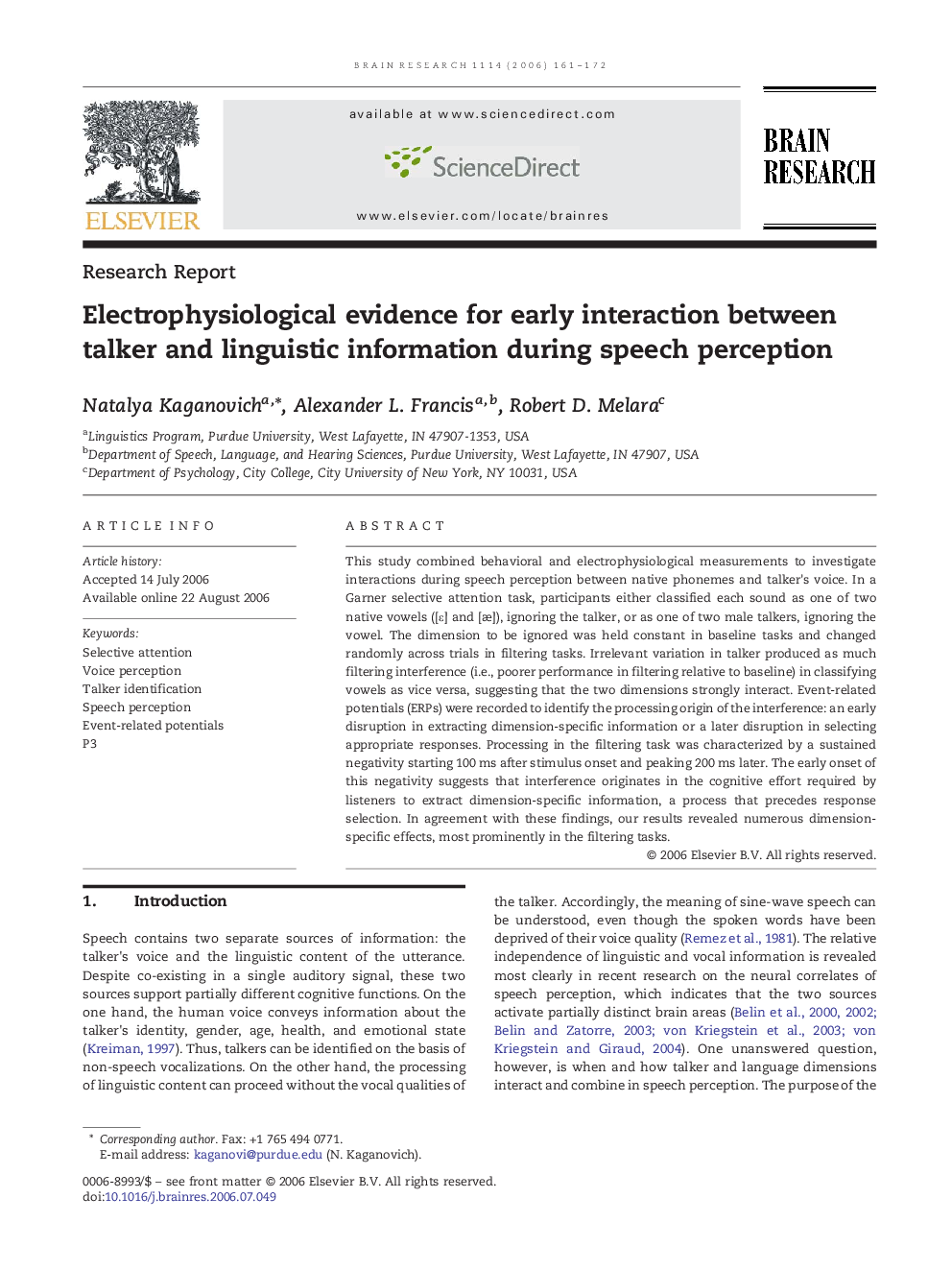| Article ID | Journal | Published Year | Pages | File Type |
|---|---|---|---|---|
| 4332011 | Brain Research | 2006 | 12 Pages |
This study combined behavioral and electrophysiological measurements to investigate interactions during speech perception between native phonemes and talker's voice. In a Garner selective attention task, participants either classified each sound as one of two native vowels ([ε] and [æ]), ignoring the talker, or as one of two male talkers, ignoring the vowel. The dimension to be ignored was held constant in baseline tasks and changed randomly across trials in filtering tasks. Irrelevant variation in talker produced as much filtering interference (i.e., poorer performance in filtering relative to baseline) in classifying vowels as vice versa, suggesting that the two dimensions strongly interact. Event-related potentials (ERPs) were recorded to identify the processing origin of the interference: an early disruption in extracting dimension-specific information or a later disruption in selecting appropriate responses. Processing in the filtering task was characterized by a sustained negativity starting 100 ms after stimulus onset and peaking 200 ms later. The early onset of this negativity suggests that interference originates in the cognitive effort required by listeners to extract dimension-specific information, a process that precedes response selection. In agreement with these findings, our results revealed numerous dimension-specific effects, most prominently in the filtering tasks.
